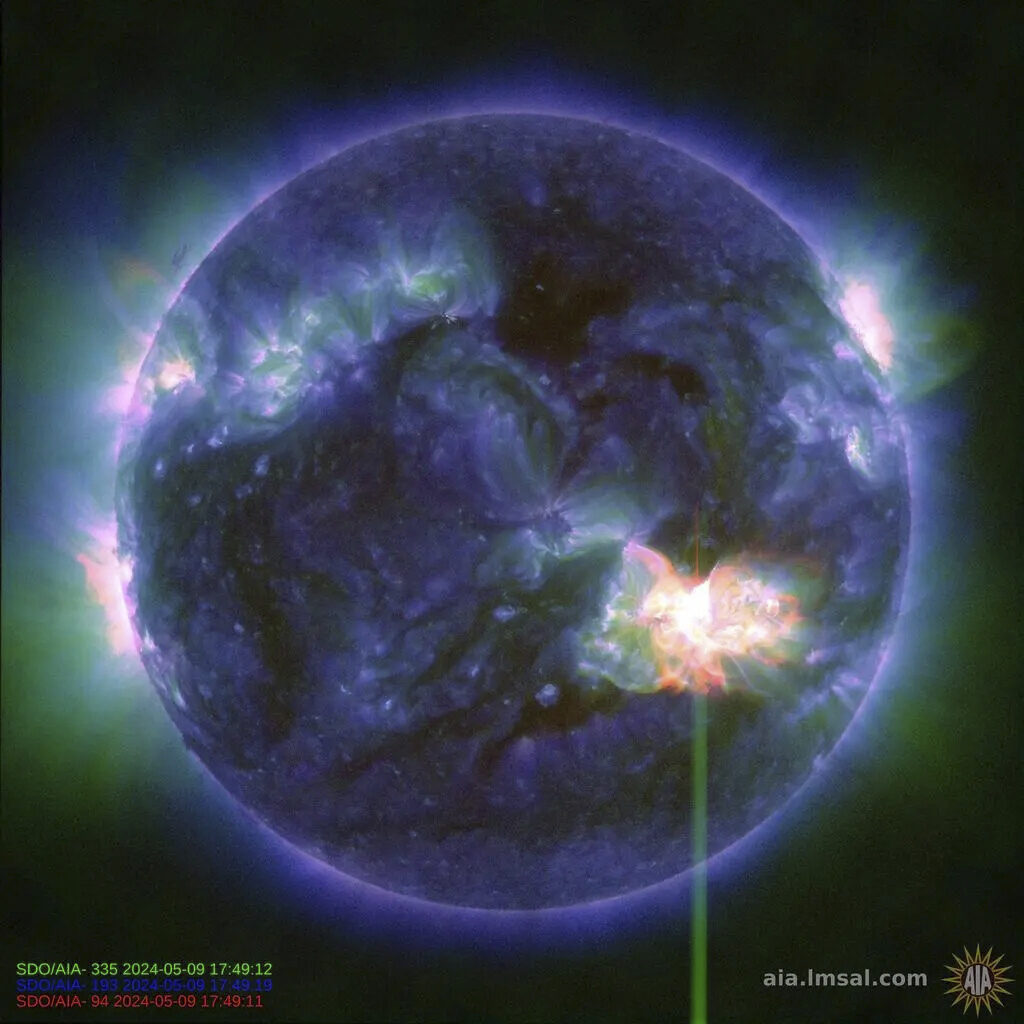Threat to Electric Grid, Communications Systems Feared as Strong Solar Storm Heads Toward Earth
Federal weather agency says the sun produced strong solar flares beginning Wednesday, resulting in five outbursts of plasma capable of disrupting satellites in orbit and power grids here on Earth.

CAPE CANAVERAL, Florida — An unusually strong solar storm headed toward Earth could produce northern lights in America this weekend and potentially disrupt power and communications.
The National Oceanic and Atmospheric Administration issued a rare geomagnetic storm watch — the first in nearly 20 years. That was expected to become a warning Friday night, when the effects of the solar outburst were due to reach Earth.
NOAA already has alerted operators of power plants and spacecraft in orbit to take precautions.

“As far as the worst situation expected here at Earth, that’s tough to say and I wouldn’t want to speculate on that,” said NOAA space weather forecaster Shawn Dahl. “However, severe level is pretty extraordinary, It’s a very rare event to happen.”
NOAA said the sun produced strong solar flares beginning Wednesday, resulting in five outbursts of plasma capable of disrupting satellites in orbit and power grids here on Earth. Each eruption — known as a coronal mass ejection — can contain billions of tons of plasma and magnetic field from the sun’s outer atmosphere, or corona.
The flares seem to be associated with a sunspot that’s 16 times the diameter of Earth, according to NOAA. An extreme geomagnetic storm in 2003 took out power in Sweden and damaged power transformers in South Africa.
The latest storm could produce northern lights as far south as Alabama and Northern California, according to NOAA.
The most intense solar storm in recorded history, in 1859, prompted auroras in central America and possibly even Hawaii. “That’s an extreme-level event,” Mr. Dahl said. “We are not anticipating that” but it could come close.
Associated Press

